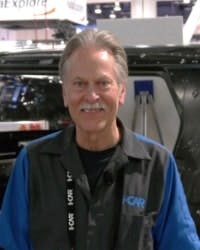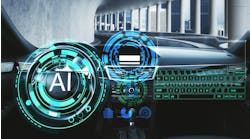Can you describe the BMW i3's LifeDrive Concept and what makes it unique from other vehicles?
The i3 is the first zero-emission, mass-produced vehicle that utilizes some of the most advanced materials, design, and technology we have seen. It was designed from the ground up as an electric vehicle rather than being a converted gasoline-powered vehicle.
The LifeDrive Concept is based on the combination the “Life” module, which is the carbon fiber passenger cell, that is joined with the aluminum “Drive” module that contains the steering and suspension, electric motor, and houses the high-voltage battery.
In a nutshell, this vehicle contains a great deal of the innovations we labeled as “future technology,” and it’s on the road today.
As manufacturers continue to adapt to CAFE standards, what do you see as the future of vehicle construction?
The challenge will be meeting the demand of the consumer to have more safety and convenience features, improved electronics, and performance, while increasing the overall fuel economy to the achieve the aggressive CAFE targets.
To counter the extra weight those amenities add, engineers are shaving every gram of unnecessary weight from the vehicle. We are going to see an increase in structures built from a combination of lightweight materials. Look for more aluminum, magnesium and composites along with Advanced High Strength Steels that are much stronger and can be made thinner to reduce weight.
There will be more bonding and riveting. Because dissimilar materials can decompose from galvanic corrosion, adhesives, coatings and insulators will need to be used where these materials are joined. We will also likely see an increase in OEM joining processes that are not duplicated in repair such as laser welds and friction-stir welding.
What can repairers do now to be ready for the changes coming down the road?
So much of the “future” technology is actually here now to a large degree, just look at the i3. This is the time to get the training and proper equipment to become proficient at aluminum welding, MIG brazing, spot welding, and riveting and bonding. All of these processes will become required as specified in OEM collision information.
You need to learn more about how new vehicles are reacting differently in a collision, and require a different repair strategy than the vehicles we have been used to working on. It is becoming more important to blueprint vehicles using OEM collision information to build the repair plan, rather than to just “write an estimate” when doing damage analysis to ensure that the vehicle will be returned to the original level of integrity and performance.
These are exciting times for the collision industry, and those who prepare themselves for repairing vehicles with these new technologies will be very successful.



